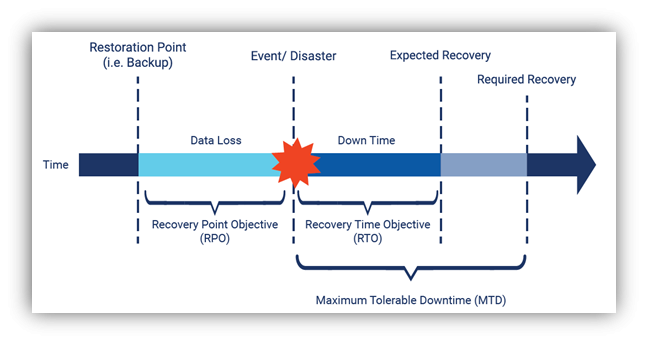The Business Continuity Planning Life Cycle
Under the direct supervision of the Senior Director of Emergency Management, and overseen by the Associate Vice President for Campus Operations, the UT Austin business continuity program will lead all university continuity initiatives and be responsible for guiding the design, development, implementation, and evaluation of all continuity plans.
The following components will provide an overview of the business continuity program life cycle outlining the key stages to an effective response and recovery:
Business Impact Analysis:
- A Business Impact Analysis (BIA) is the process of determining the criticality of business activities and associated resource requirements to ensure operational resilience and continuity of operations during and after a business disruption. The BIA quantifies the impacts of disruptions on service delivery and illustrates which critical functions are time-sensitive or have a longer tolerance during an interruption.
- Each critical business function identified will include a recovery time objective (RTO) as part of the BIA. This process determines the criticality of business activities and resource-intensive activities, which ensure operational resilience. Each critical function will also include a recovery point objective, or RPO. The RPO states a point at which quantifies a loss, while the RTO states an acceptable length-of-time which can elapse until reaching a significant impact to a business function.

Developing Continuity Plans
- The purpose of continuity planning is to restore critical functions as rapidly as possible so that the institution can continue its core mission. UT Austin's Continuity of Operations Plan (COOP), establishes an institutional framework which is used as the foundation for all continuity planning efforts providing strategic direction for the appropriate recovery actions to take during an operational interruption or incident. In addition to the UT COOP, departments whose services are considered critical or essential to the continuation of operations are required to complete their respective COOP. Departments and colleges/schools/units who may be affected by an interruption or emergency are recommended to develop a Business Continuity Plan (BCP). While similar to COOPs, BCPs focus on all business and academic functions that a department considers critical to continue.
Testing and Exercise
As part of the evaluation process of the continuity planning life cycle, the COOP and all department-level continuity plans will be reviewed and tested annually to validate procedures and ensure the university is capable of executing the continuity program and plans. Evaluating the effectiveness of the various continuity plans will be performed through the following exercise formats that includes but is not limited to:
- Tabletop Exercise
- Functional Exercise
- Full Scale Exercise
Business Continuity Disaster Recovery (BCDR) Council
In partnership with Enterprise Technology, the Office of Emergency Management BCDR Council was established to provide strategic direction and general guidelines for all campus wide continuity efforts. The BCDR council consists of constituents throughout the institution whose role involves, influences, directs, or supports continuity related initiatives.
The purpose of the BCDR Council is to guide and steer institutional efforts to prepare for interruptions of daily business operations and – when it is possible to do – lessen or mitigate the impacts from such events. Councilmembers will make recommendations regarding the University’s policies, procedures, and practices regarding continuity efforts. Members of the Council represent a variety of the University’s operational areas and/or interests.

